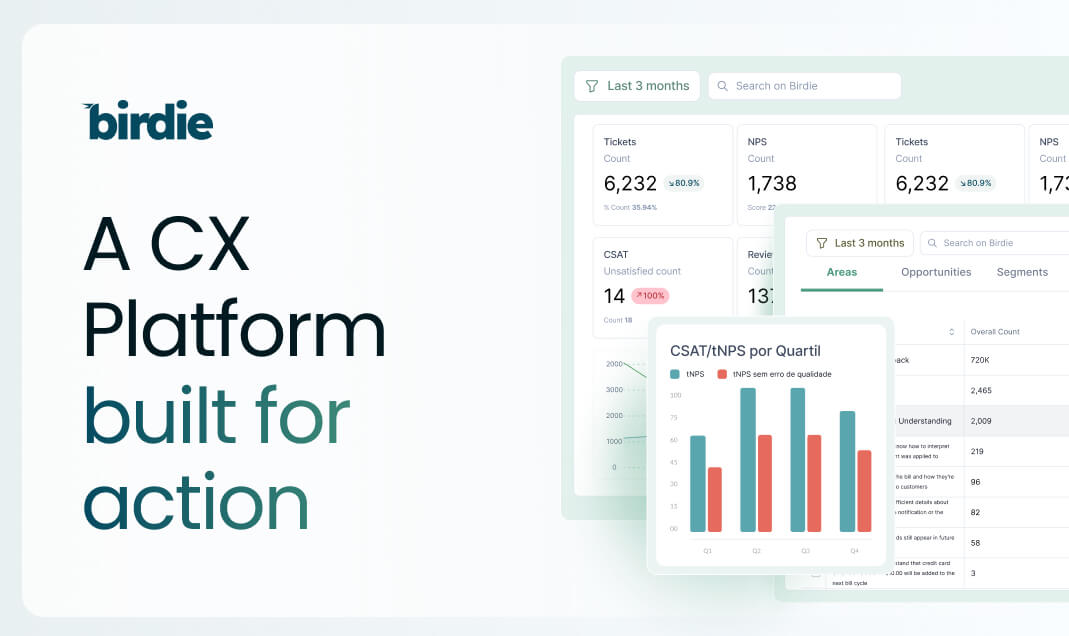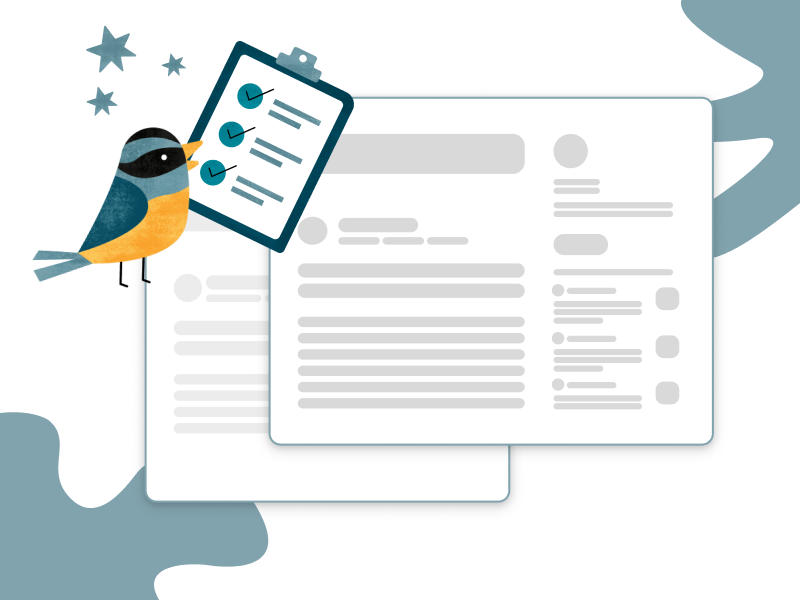
Although a product roadmap is something that exists in most product maturity levels in software companies, there can be huge differences between them. Building a mature product roadmap requires good product leadership, a clear product strategy, some level of organizational structure, and something that is becoming increasingly important: data.
Using data, especially from customers, to inform your product roadmap is what differentiates building projects based on opinions or anecdotal/HiPPO's requests from building features.
A customer-centric and data-informed approach, thus, is key for successful product management, and that goes beyond product analytics: it means combining both quantitative and qualitative data - from multiple sources of customer feedback - to inform your product roadmap.
That said, let's further explore why user feedback should be part of a product team's key planning inputs and how customer feedback analysis can be incorporated into your roadmapping process.
Why is customer feedback analysis important for your product roadmap?
Customer feedback is a great source of insights for PMs. Being close to customers and understanding their needs becomes progressively more complex as your company - and your volume of customer feedback - increases.
One can argue that they already have enough input from key stakeholders or that bringing more feedback can slow down their process, but truth is that there is no such thing as too much user feedback. The more you get in contact with your customers' needs and experience, the better and more successful your products tend to be.
Companies that aren't incorporating user feedback into their product roadmap management - from roadmap definition to feature prioritization - are missing the opportunity of reducing uncertainties, getting an easier buy-in of stakeholders, increasing their customer empathy, and building a more error-proof roadmap.
Doing such a thing is not trivial: organizing and making sense of thousands, if not millions, of pieces of unstructured data is a nearly impossible task if done manually - and will definitely slow your team down if you try to do so. Sampling a few pieces of feedback can do the job, but might lead to bias or blind spots. And so does relying on other teams to summarize feedback and hand it over to you.
That's where customer feedback analysis becomes needed. Having the right tools - and processes, of course - in place to stream, categorize, and analyze user opinions can make or break the case for building and constantly evolving a product roadmap fed by user feedback data. And, as time passes, the system only gets more intelligent and insightful when it comes to helping you make better decisions.
Where to gather user feedback to inform or validate your product roadmap?
When thinking about customer feedback, most product managers think of in-depth user interviews conducted by them or user research teams. Even though that's a top-of-mind source of feedback - and an extremely important one - that are multiple other places a PM can go to gather user feedback and inform a product roadmap.
We won't get into details about all the different ways of collecting user feedback, but here are some of the most common for most companies:
- User interviews
User interviews are a great way of gathering user feedback to support feature prioritization. Talking to customers allows you to build a connection with them and dive deeper into different aspects of their user journey, from jobs to be done to challenges and pain points.
On the other hand, they aren't scalable. It's hard for PMs to find time for those conversations, and users are not always willing to talk or are hard to find. That's where the other sources of feedback collection can help: you can better segment your users based on these sources to better profile who to talk to and also find who is more likely to respond and want to share their feedback in detail.
- Product surveys
Product surveys can be done in different formats. There can be micro surveys during the usage of a feature or NPS/CSAT surveys sent to customers of different segments and at different moments of the journey, just to name a few. Survey respondents can give a lot of detail about an experience in an open-ended question, and are more likely to be willing to share feedback in an interview.
- Support tickets
Users who reach out to support asking for help, reporting a bug, or suggesting a feature are normally doing that because they found a blocker for their experience. Looking at these conversations from a product management perspective can bring a lot of insights when it comes to new feature development or bug fixing.
Just like survey respondents, people who interact with support also tend to be open to talking further, especially if it is about a problem they faced in the past or an idea that they shared previously.
- Product analytics
Product analytics is not exactly user feedback, but is a source of user behavior and helps understand how users are interacting with your product. It is especially useful to help identify journey blockers, bottlenecks, and user profiles and to bring a quantitative perspective of what the user is doing.
When combined with qualitative feedback from the sources already mentioned, product analytics insights can become extremely powerful in order to answer the why behind the what.

When and how to use customer feedback in your product roadmap prioritization?
Customer feedback analysis is a critical piece of the product management puzzle. That's why looking at user feedback should, ideally, be a daily activity for every product manager, whether it is only to get the pulse of the customer and develop product intuition or to really run analyses for specific decisions.
Before getting to that stage where user feedback is continuously accessible without friction, PMs can incorporate it in specific moments of their product management life cycle. Here are two ideas of how to use customer feedback analysis in your product management process:
- Discovery
Customer feedback from multiple sources can be used to generate ideas for product discovery, especially in a continuous discovery process.
By casting a wide net in terms of user feedback - which means expanding feedback collection from interviews to multiple sources - a company can get access to a high volume of feedback. When categorized according to the most relevant themes and topics, these user opinions allow a product manager to identify important elements of the user journey that can be harming an important KPI or metric - or, as some like to call it, a business outcome.
Once these elements are identified and mapped according to business outcomes, they can be organized according to opportunities or hypotheses. From there, a product team can then define which ones to prioritize and build a list of users that shared feedback about that topic and reach out to them to schedule in-depth interviews with a laser focus to explore these opportunities.
After the interviews, feedback can be accessed again, this time to search for more examples or evidence of what was found in a user interview and to confirm that the findings from those interviews were relevant in terms of reach.
- Validation
The other way of using customer feedback is to validate and quantify hypotheses or features that were previously raised, defined, and prioritized. This is a quick and agile way of diving deeper into an assumption without having to run specific surveys or interviews - something that would delay a validation process.
The validation of problems, ideas, or features can be useful in several ways, from estimating the reach and impact of a given feature on your global audience or even a specific user segment to getting more detailed information of the problem or expectation customers have from it to help you better scope a feature, a user story or build supporting evidence for it.
With that in hand, it's easier to weight different opportunities and build the case for the prioritization of a given feature or bug fix.
One important thing to note is that, even though user feedback plays a key role in informing and helping product managers in feature prioritization, they shouldn't be your only input when it comes to building a product roadmap. It's important to take into consideration things such as your business and product strategy and the market. It's also important to remember to always relate it to your user journey, your key metrics, the complexity of each feature and many other aspects.
No matter what, customer feedback is a great source of input for PMs to gather and present evidence to stakeholders about important aspects of the user experience and how a product is being perceived by users in terms of performance, usability, value delivery, and more. And if you're looking for a way to better organize and present insights from customer feedback, this template can help.








